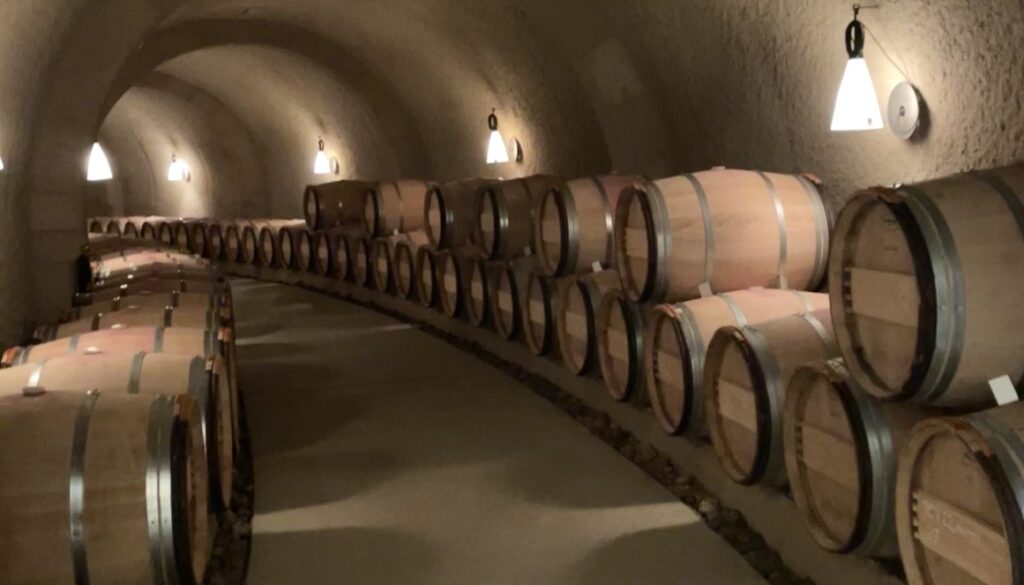An Entry into the Jancis Robinson Wine Writers Contest 2025

Jerry Kolins is medical director of laboratories at Palomar Health, a hospital system in San Diego County, California. He is also a struggling enologist. To supplement his wine knowledge and service experience, he sought a position as a sommelier. While such positions are difficult to secure, one’s opportunities increase when services are offered as a volunteer. An Italian Bistro in La Jolla, California provided that opportunity on weekends and selected evenings. This led to certified sommelier status in 2024. Jerry continues to enjoy pairing wines with sporting events as shown in his blog www.VineandVictors.com
As a first year medical student I never thought I would find a test more challenging than the gross anatomy series of examinations a first year medical student needed to successfully complete in order to enter the clinical years. It was a 750 hour, full-year course including the dissection of the human body. Today, medical students don’t spend nearly that much time studying gross anatomy. That was the most difficult examination in the world for me—until I discovered the Wine and Spirit Educational Trust (WSET).
If you check the internet, you will learn that the blind tasting of wines to achieve the Master Sommelier title is considered by many the most difficult examination in the world. When I mentioned this to a Master Sommelier he said, the Master of Wine is the highest achievement. He lamented not continuing with his education. I started mine by enrolling in WSET.
Until I was exposed to California Cabernet Sauvignon, my wine experience was limited to Ripple and Thunderbird. Then I tasted a 1974 North Coast Silver Oak. The flame was lit. I still have one bottle of that Silver Oak Cabernet vintage that forever altered my wine budget. But it took the quieter years of the COVID pandemic for me to invest the time and money needed to obtain a WSET diploma. It took me more than 750 hours to complete the program. But, unlike medical school, I spent those years wondering if a WSET diploma was achievable. The only thing more disappointing than failing is not trying. So I decided to try.
On my Diploma tasting exam, also referred to as D3 (Wines of the World), one of the twelve unknown wines was a Riesling from the Rheinhessen in Germany. I fully suspected one of the twelve wines would be a Riesling. So, I was on the “look-out” for it. Often these wines have a pleasant hint of petrol. This aroma, due to the organic compound 1,1,6-trimethyl-1,2-dihydronaphthalene (TDN), appears in many Rieslings with bottle aging though it can be chemically detected at low levels in other red and white varietals. Humans inherit the ability to detect these petrol notes. In studies of sensory threshold, when the concentration reaches 2-4 ug/L some can detect the petrol note. You won’t drink it when the concentration reaches around 70 ug/L.
The olfactory system is more advanced in women than men. There are several explanations that account for the female superiority in detection, identification, and discrimination of aromas including more neurons/unit volume in the olfactory bulb, hormonal influences and olfactory awareness. Whatever the explanation, numerous peer-reviewed scholarly articles support female superiority in olfactory perception. This is where Gregor Mendel enters the picture.
I couldn’t detect a petrol note in any of the twelve unknown wines. It’s not me. It’s my DNA. I now had an excuse for missing the Riesling on the exam even though I was waiting for it! Gross anatomy was much easier. I could see every muscle, nerve and artery. Would practice really improve my wine score? My olfactory senses will always be limited by my DNA.
After the exam, a few of us shared our thoughts on the unknown wine selections. I mentioned to my surprise that none of the wines was a Riesling. Immediately, one of the female students said, yes, there was a Riesling. She told me the petrol was evident and should point me to a flight of German wines.
The effort and skill needed to successfully complete these programs seem extraordinary to a guy like me whose experience has been principally at the consumption end of the market. I now can successfully defend the enologist who claims his trials exceeded those of us who moved from gross anatomy to our hospital clinical rotations.
I passed gross anatomy and scored at the 92nd percentile on the exam given by National Board of Medical Examiners. I passed the blind tasting portion of the Diploma exam by one point. Obviously, I shouldn’t quit my day job. Attending my graduation at Guildhall this year I met the female student who told me about the petrol note. She proudly stated that she is enrolling in the Master of Wine program. I remain a bit envious of her skill set. But a man has got to know his limitations.
After years of study, I am often asked if I have a favorite wine. With all sincerity I say, my favorite wine is the one I can identify on a “blind” tasting. So, I have come to love Eden Valley and Clare Valley Rieslings. The sunny Australian Barossa Valley permits the development of petrol precursors. The petrol note is often detectable, complementary, and directs the “blind taster” to South Australia. Those Rieslings also support my emotional health.
Leave a Reply